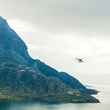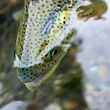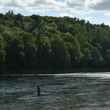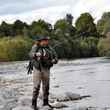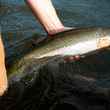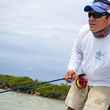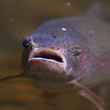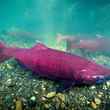We hit the river around 1:00 in the afternoon this past Saturday, with a three hour drive in the rearview mirror and the various necessities of early March fly fishing - the waders and the synthetic long johns and the fleece pants and the heavy wool socks and the Nano-Puff jackets - all in place.
It didn’t matter. While the air temperature was decent, the water was down in the mid-30s and wading conditions that were fine for a grown man were bone-achingly, foot-numbingly cold for a 9 year old boy with no body mass to speak of and the fat reserves of your typical anorexic super model.
We slid down the muddy brown bank of the side channel, stepped into the Missouri, and picked our way slowly across the current on a wide gravel bar, his hand in mine, both of us holding tight, knowing that if he went in the river, even here in the shallows, he’d be hypothermic before I could get him back to the truck.




